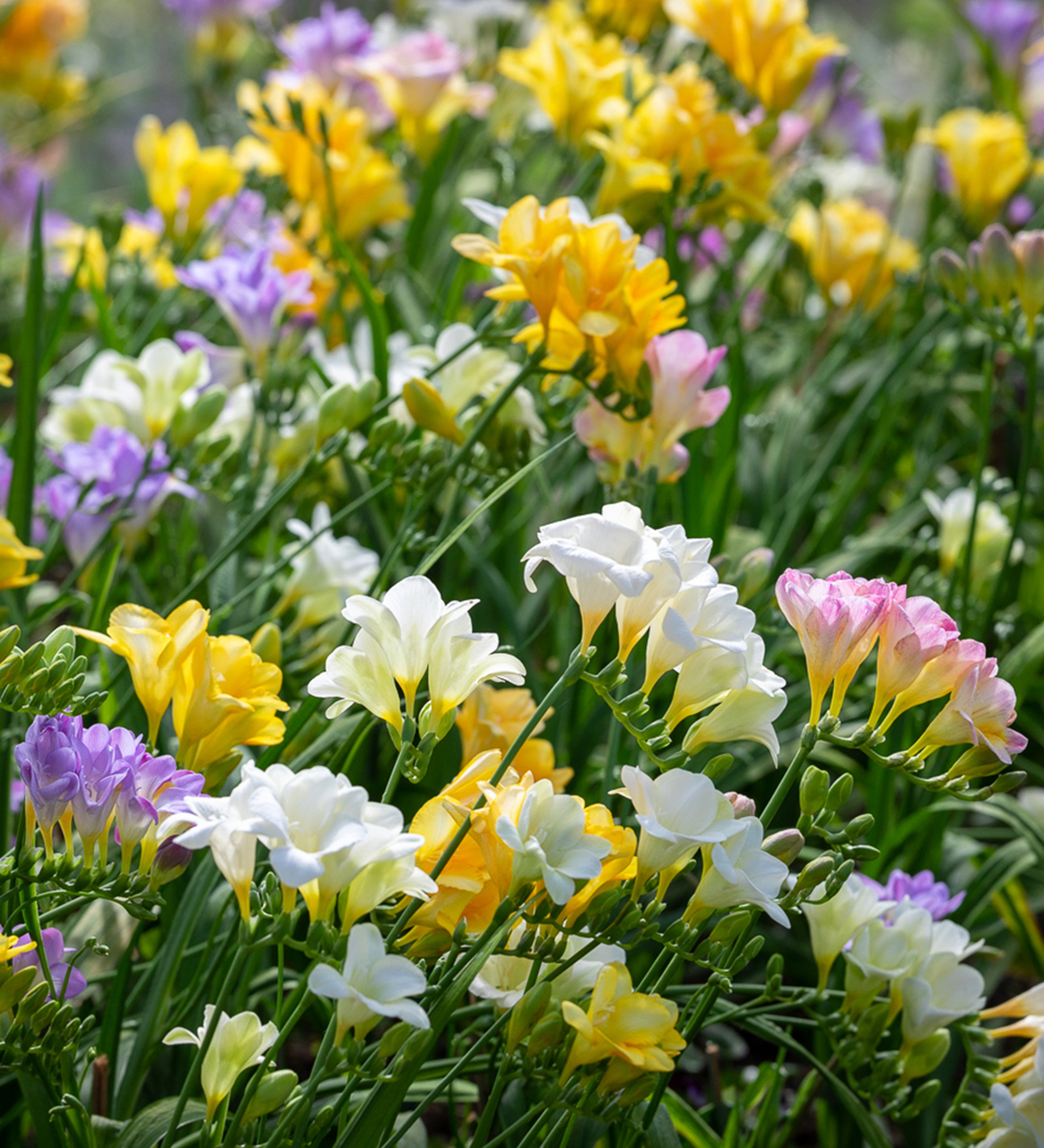why you should choose 'prepared' freesia corms

Freesias were my best gardening success in 2011. They can be a washout if you start with corms that have been sitting around too long in their bag, so that all life's juices have been drawn out of them. I had tried growing "garden varieties" a couple of times with hopeless results. The odd leaf emerged, but not a single flower.
Then in the spring of 2011, I visited a freesia grower in Holland who explained that to flower reliably, the corms must be professionally heat-prepared and then stored carefully until planting. They need to be subjected to the dormancy-breaking heat treatment – an average of 12 weeks at 30C (86F) after lifting – and then kept at not much below this until the frosts are over and they make it into the ground. This – he said, with the so-called “prepared corms” – mimics what they would find in their native Cape in South Africa and ensures good growing and flowering.
So, I came back from Holland with several bags and waited for the frosts to be almost certainly over. I then started planting a batch of about 20 corms every two to three weeks from late April until July. Most went into an east-facing border against a hawthorn hedge, a partially shaded spot in the cutting garden, although I also planted some up in a few pots for scattering around the greenhouse.
flowers begin to appear
I had almost given up and thought that, yet again, all I would get were their veiny, flattened, crocosmia-like leaves. But four months later (that’s what they take – about 100 to 120 days from planting), the first freesia flowers began to appear. And then you couldn’t stop them. They flowered their socks off, with the latest batch continuing to produce new spikes after the first hard frost. The flowers were then marked by the cold, but kept on coming until I lifted most and dried them off inside.
The pots in the greenhouse fared slightly less well. Based on having seen them growing in the wild, I had imagined they liked intense heat once growing, but the light shade of the garden hedge seemed to suit them well, and I now know that if grown in a greenhouse, they are happiest with a bit of shading, particularly in the early stages.
In December, we lifted most, but not all the corms, mulching a few lines deeply, leaving them where they were. I’m hoping that freesias may do as dahlias do in my garden and, given enough winter insulation (that’s a good 6-8in of mulch to protect against frost), they’ll survive left in the ground.
beauty for the vase
They are often the only cut flower I buy, because I love their perfume and longevity in the vase so much I cannot resist them. The whites and yellows have the strongest perfume, with the deep reds next, followed by the pinks and mauves. The fragrance is fresh but with depth to it, like a delicious Alsatian wine. Freesias smell incredibly strong and sweet but not sickly, a combination that is rarely matched by perfumers.
So what is it that makes freesias smell – and what makes some varieties smell so strong while others have hardly a whiff?
There are up to 50 different aromatic compounds in their scent and the quantity and balance between them varies from one variety to the next. Rather like a DNA blueprint, there is a distinctive and clearly identifiable pattern for each. As a general rule the red freesias, yellow freesias and white freesias give the strongest scent, the blues and deep pinks less. The yellows, blues and whites have a longer vase-life than the reds and pinks, with some lasting three weeks if they are cut in bud.
The aromatic compounds are volatile so the scent is stronger at higher temperatures, but there are freesias that don't smell at all. Like everyone, I've been fooled by florists telling me that the bunch I'm about to buy is not smelly because they've been stored at very cold temperatures and that they'll smell fantastic when I get them home. This is nonsense. There has to be a faint scent even when the flowers are chilly if it is to pour out and fill a room once they're cosy and warm.
I love arranging them in one of two ways: either jumbled up together, a mixed bunch in a strong-coloured vase, or separated out and spread right down the middle of a table as a series of single stems.
However, buying them always makes me feel rather decadent and guilty when I have plenty of home-grown flowers in the garden, ready and waiting to be picked. There are too many air or road miles involved, plus serious heating costs that go into most commercially grown freesias, to make them an environmentally sound choice. Now I at least have the possibility of picking my own from July to October/November.
We now only sell these ‘prepared’ freesia corms on the Sarah Raven website.



